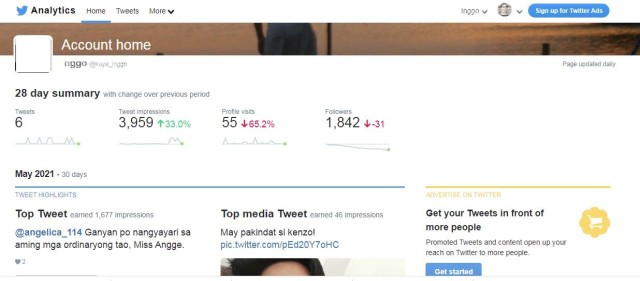Table of Contents
A microblogging platform known as Twitter permits almost all sorts of businesses to captivate purchasers directly. Although Twitter contains an excellent volume of data, which becomes difficult for brands to emphasize a statement, it may torment their trading.
That being the case, Twitter sentiment analysis – which is a tool, is preprogramming to detect emotions in discussion on Twitter. This tool plays a vital role in the marketing of social media policies. With the help of sentiment analysis, organizations can listen to consumer’s voices clearly, and it also permits the organizations to get the spectator.
Their top priority is to analyze what the spectators say about their brand name and contestants. To do this, they create a new model for improvement.
Here, you will know using a tool – sentiment analysis to hear the consumer’s voice on the Twitter platform. For better understanding, follow the simple steps to carry out sentiment analysis.
What Is Sentiment Analysis?
It is a preprogrammed procedure to classify and identify individual information through text formats. It can be of different kinds, may involve feeling, opinion, or experience related to product quality or a specific subject.
Polarity detection – it is a sort of sentiment analysis. It necessitates the classification of mentions like neutral, positive, or negative.
However, this sentiment analysis tool makes use of NLP – called Natural Language Processing. It senses the language of the individual and involves learning by machine to conduct precise sums.
For successful results, you have to connect this tool to Twitter without any interference. In this way, you will be able to keep an eye on the tweets all the time.
Why Sentiment Analysis?
This microblogging platform tool can come up with great probabilities. To look over tweets, instantaneous and sentiment determination which lie under all texts, provide novel proportion for Twitter monitoring. Twitter sentiment analysis has few but most known and straightforward uses for business. These include:
Business
If you want to introduce some novel characteristics in your business, different marketing movements or redesigning of a site are the first track on the consumer’s responses.
The reason behind is, creating new changes, actions or by modifications aid you to sustain the devotion of consumers. It also aids the extension of novel characteristics.
Politics
There is an excellent volume of chat on Twitter which consists of politics and news. It is considered quite a suitable place to take steps according to the mention of the public, notably in the case of elections.
Additionally, the Twitter sentiment analysis also gives you some fascinating intuition about people’s observations.
Public Actions
Availability on Twitter is essential for the representatives of customer service. They must take part with consumers and then reply to their questions as soon as possible.
According to the survey, if there are ten customers, then 6 of them look for a response to the brand in case of any question.
The estimated and expected time for response is one hour approximately. Now, the question is how one will recognize which of the questions (ask for support) is crucial.
Again this sentiment analysis tool can follow the customers and your brand interlinkage. By this feature of Twitter sentiment analysis, you will ensure that you answer the crucial problem firstly.
How to Perform Sentiment Analysis on Your Twitter Data

If you want to have sentiment analysis, it consists of various steps. By moving on, you will get an explanation of all actions. However, some tools are best suited for Twitter sentiment analysis python and non-coders.
Gather Relevant Twitter Data
The data of Twitter must be the agent of your searches; this is because you will use it.
- To instruct sentiment analysis tool is the first step
- Check your tool working performance
Additionally, it is vital to think about the sort of tweets that you are going to analyze.
- In the case of the latest tweets, it is helpful to use hashtags in the present time.
- For historical tweets, differentiation of sentiments at some intervals is functional.
Besides all this information, you can save twitter data in Excel format or help desk. But, what to do if you forget to keep it? You must know how to draw out twitter data in case of not saving before. Here are many strategies for extracting data from Twitter.
Creation of Zap
Select the application from where you want to extract twitter data, generate a zap for workflow on a Zapier. Also, select supplemental apps for action (for sending of data).
Suppose you need to extract data from the tweets, which consists of your brand mention. To create a connection between Google sheets and the Twitter app, you can use Zapier. After this, you will get your tweets that contain your brand detected by the Zap.
Clean Your Data Using Pre-processing Techniques
After collecting all the tweets required for the sentimental analysis, you have to arrange your whole data. It is a fact that the data of social media is not structured in a way. You have to clean your data because the high-quality data will provide you with precise results.
There are too many tasks involved in the pre-processing of the data of Twitter. These tasks include removing all the irrelevant information.
The irrelevant emoji, characters, blank spaces, and irrelevant information need to be removed. It improves the format and deletes duplicate sentences, words, and Tweets that are less than three words.
Create a Sentiment Analysis Machine Learning Model
With the help of the MonkeyLearn platform, you can easily make sentiment analysis and can implement it. However, it is a platform of machine learning. It also provides you the trained models, and you can start with your selected sentiment analysis model.
Besides this, you have the opportunity to teach your model with the help of Twitter data. If you want to access the trained model, you have to sign up for the MonkeyLearn platform. So, follow the given steps to do sentiments analysis
- Select the type of model
- You have to select the classification types that you want to do
- After this import the data of Twitter
- To train the classifier tag, your data
- At the end test, the classifier
Analyze Your Twitter Data Using Your Sentiment Analysis Model
After doing the above-given steps, you will get the trained model of sentiments analysis. Now you are set to analyze unlimited tweets. For this, merge all your data to the models that you have selected or created.
You can do this in three simple ways with the help of MonkeyLearn; these methods include:
Batch Analysis
In this process, find the batch option and then here upload the excel file. Remember that the excel file must contain the unseen and new tweets. After this, your classifier will check all your tweets and give you the new excel file. It includes the complete sentiments analysis results.
Integrations
The particular integrations are present and with their help, analyzing the new Tweets is very easy. For inputting the Tweets data, you can use Google Sheets. And for connecting the Twitter data with MonkeyLearn, the Zapier is present.
MonkeyLearn’s API
If you are an expert coder or know how to do coding, you can use MonkeyLearn’s sentiment analysis tools. You have to use it to examine the new Tweets like Python and in other different programming languages.
Visualize the Results of Your Twitter Sentiment Analysis
With the help of data visualization tools, you can quickly understand the analysis results. However, the MonkeyLearn studio works both as data visualization to understand the result and also data analysis.
MonkeyLearn comes with attractive business templates. So, with the help of its user-friendly interface, you can quickly analyze the data and see your results that are present on the dashboard of MonkeyLearn. So it is easy for you to decide based on the results.
Frequently Asked Questions (FAQs)
How do I improve my Twitter sentiment analysis?
There are four ways to improve the sentiment analysis of Twitter:
- Carefully select the training and test corpus
- Must use the complete stopwords and don’t use the normal
- You have to use the cleaned corpus as compare to the noisy one
- Always use complex words as a feature
Which algorithm is used in Twitter sentiment analysis?
The algorithm that is most used in sentiment analysis is Naive Bayes. This algorithm supports the vector machines, and if you have small data, then it works perfectly.
Which algorithm is best for sentiment analysis?
The best algorithm includes methods of machine learning like the Logistic Regression, SVM, and Naive Bayes. All these always provide you with the perfect result.
What is Tweepy?
It is the Python library; you can use this library to find the API of Twitter. Tweepy is the best option for generating two bots or for normal automation.
Conclusion
The Twitter sentiment analysis means to analyze the text sentiments in a negative, positive and neutral way. You can do this with the help of the text mining technique; most experts do Twitter sentiment analysis python code efficiently.
This is because the most used language in this technique is Python. However, some tools will help you to do Twitter sentiment analysis, and all are given above. I hope the article is beneficial for you and if you like the article, share it with your friends.




